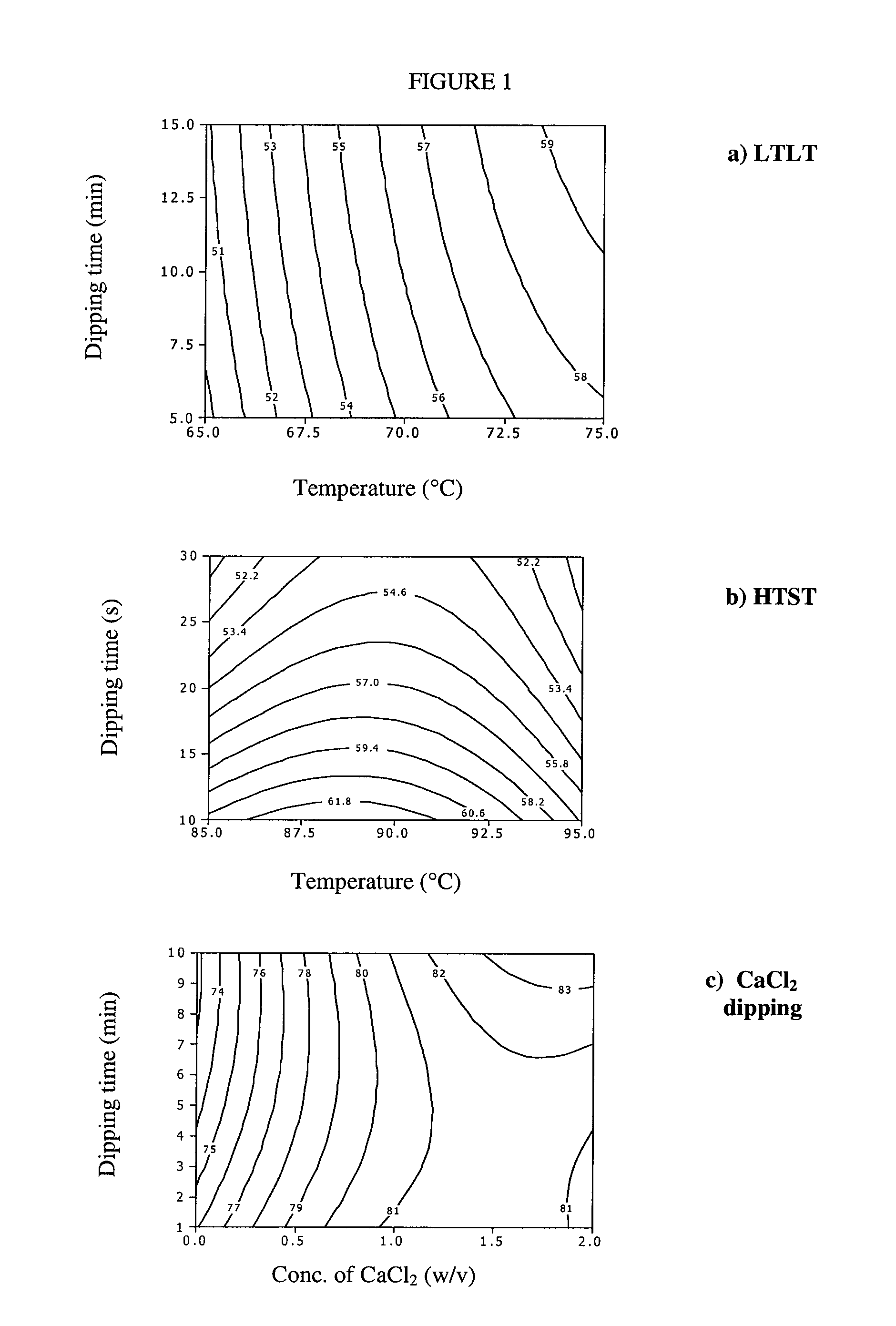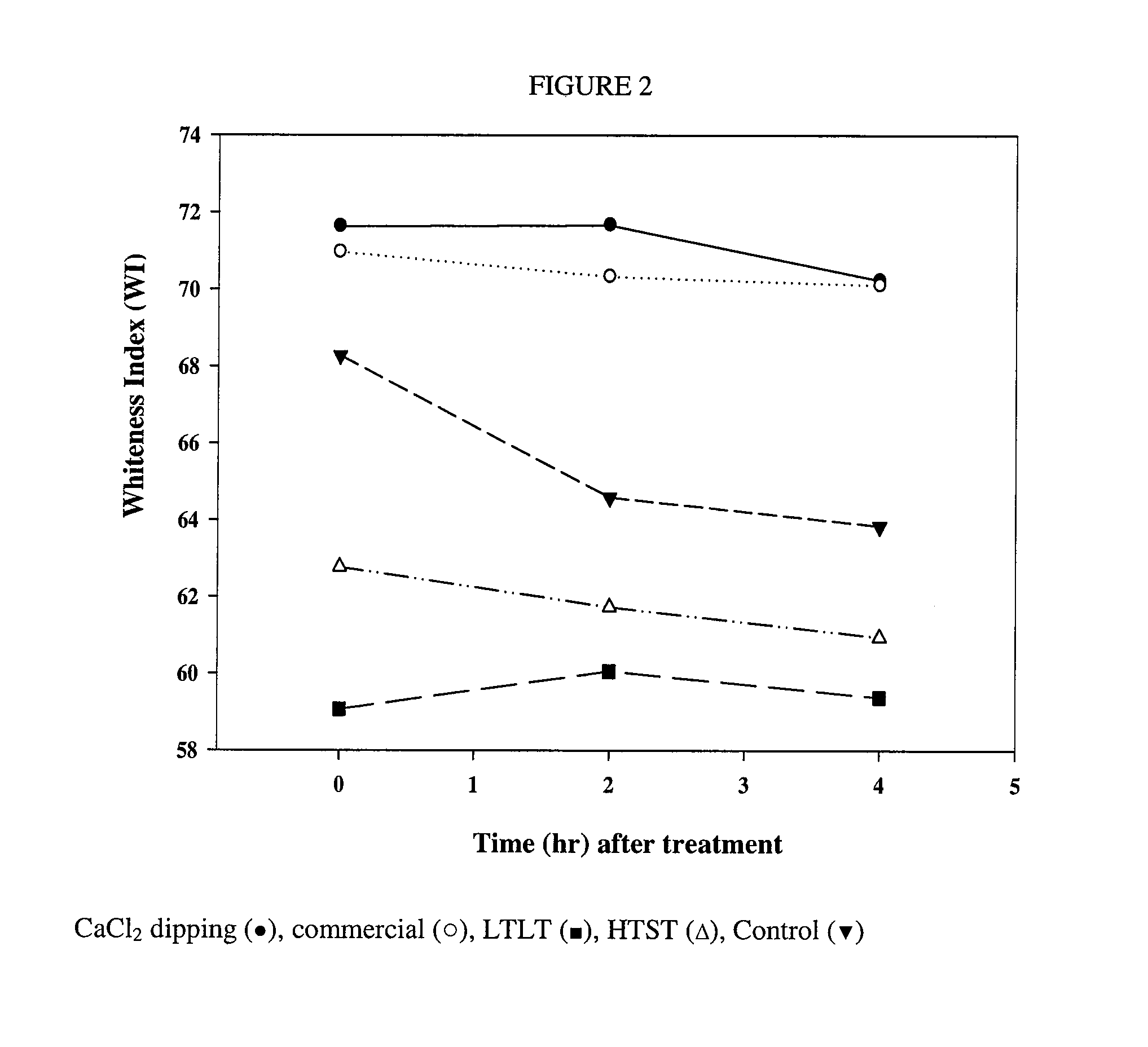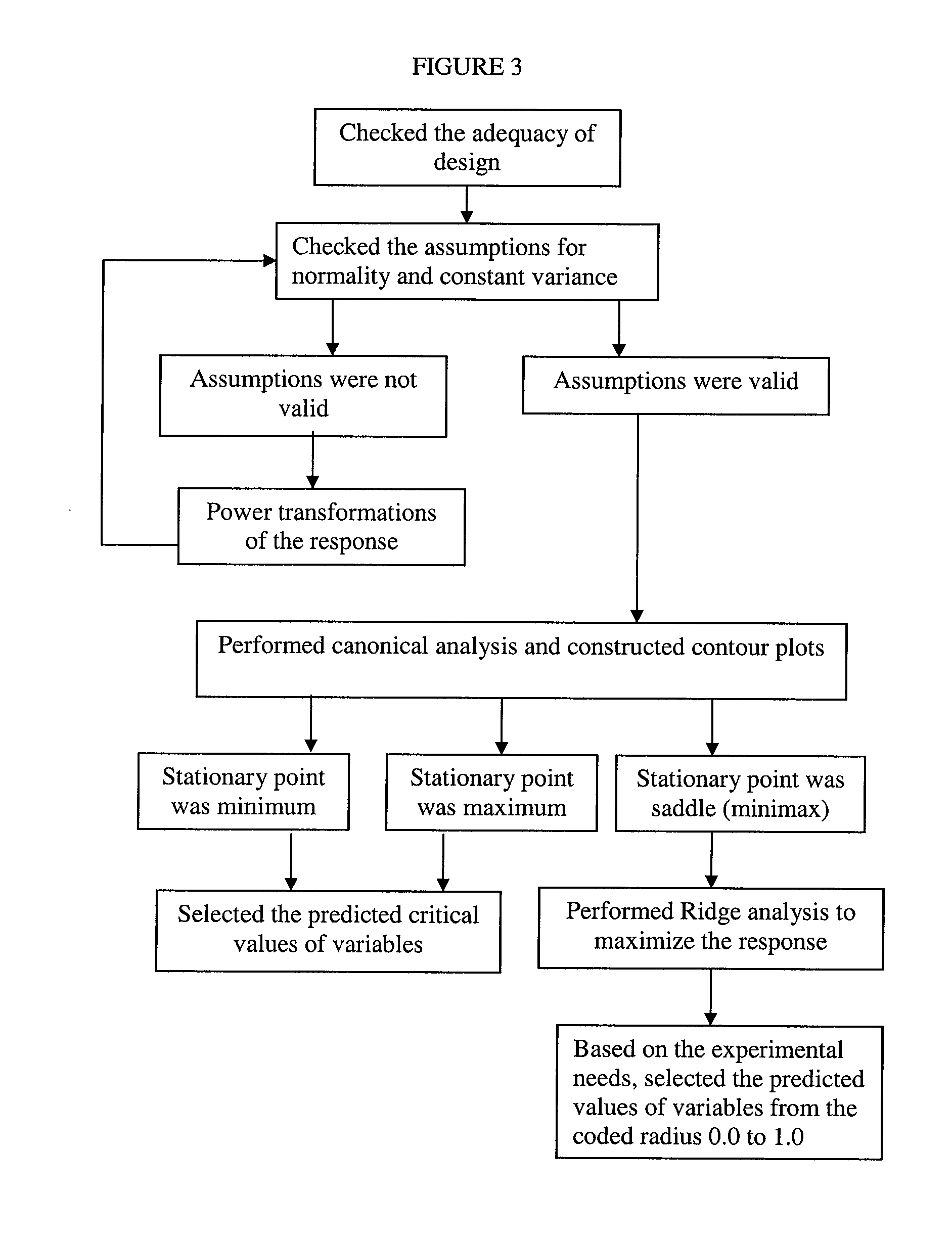Non-fried apple food products and processes for their preparation
a technology of non-fried apples and food products, applied in the field of value-added snacks from apples, can solve the problems of quantitative loss of antioxidants, significant loss of these compounds, and decline of the market for fresh apples in nova scotia, and achieve the effects of improving the sensory attributes and nutritional quality of apple snacks, improving textural attributes, and improving the whiteness index
- Summary
- Abstract
- Description
- Claims
- Application Information
AI Technical Summary
Benefits of technology
Problems solved by technology
Method used
Image
Examples
example 1
Biochemical Characterization of Enzymatic Browning in Selected Apple Genotypes
Materials and Methods
(a) Plant Material and Chemical Reagents
[0068]The selected apple genotypes (‘SuperMac’, ‘SJCA16’ and ‘Eden™’) developed by the AAFC-HRDC, Quebec, were harvested at their commercial maturity (based on the starch index) and analyzed for post-cut enzymatic browning 5 months after standard controlled atmosphere storage (2.5% O2+2.5% CO2, 0° C., >95% RH) compared with two commercially grown cultivars ‘Empire’ and ‘Cortland’. All the apples were collected from the same orchard. Sixty apples per tree were harvested randomly from top to bottom inside and outside of the canopy from three trees (replicates) for each genotype. When a tree had fewer than 60 fruit, apples were combined from two adjacent trees of the same genotype. Glacial acetic acid, Triton X-100, polyvinylpyrrolidone, catechol and methanol were purchased from Fisher Scientific Ltd., ON. Iron (III) chloride hexahydrate, potassium ...
example 2
Evaluation of Different Methods to Control Post-Cut Enzymatic Browning in Apples
Materials and Methods
(a) Plant Material and Chemical Reagents
[0098]‘Empire’ cultivar was selected for this study due to its high susceptibility to post-cut enzymatic browning. Apples were obtained from a local fruit market (Sterling Fruit Market, Truro, NS). Food grade CaCl2 was purchased from ACP Chemicals Inc., St. Leonard, QC. FreshXtend™ was obtained from FreshXtend Technologies Corp., Vancouver, BC.
[0099]Apples were washed, wiped with paper towel, cut into 2.0-mm-thick slices perpendicular to the core using an apple slicer (Waring PRO™, Model: FS 150C, Torrington, Conn.). For the application of chemical anti-browning treatment, the slices were immersed in treatment solutions using a fruit to solution ratio of 1:10 (w / v). Three replicates were used for each treatment where a replicate consisted of three randomly selected slices from three apples. All the experiments were conduct...
example 3
Comparison of Drying Processes for Producing Non-Fried Apple Snacks
Materials and Methods
(a) Plant Material and Chemical Reagents
[0128]Apples of the ‘Empire’ cultivar were selected for this study and apples were obtained from a local fruit market (Sterling Fruit Market, Truro, NS). Vacuum drying was done in a freeze dryer with the cooler unit off (SuperModulo freeze dryer, Thermo Electron Corporation, N.Y., US). Oven drying was done using gravity convection oven (Thelco, Model: 28, GCA / Precision Scientific, LabX, ON). Air drying was done using a tray dryer (Armfield, Model: UOP 8, Armfield Ltd., England).
[0129]For drying, apples were washed, wiped with paper towel, cut into 2.0-mm-thick slices perpendicular to the core using an apple slicer (Waring PRO™, Model: FS 150C, Torrington, Conn.). The apple slices were immediately put on the stainless steel wire mesh and transferred to the dryer. For the drying of apple slices the conditions selected for air-, oven-, an...
PUM
 Login to View More
Login to View More Abstract
Description
Claims
Application Information
 Login to View More
Login to View More - R&D
- Intellectual Property
- Life Sciences
- Materials
- Tech Scout
- Unparalleled Data Quality
- Higher Quality Content
- 60% Fewer Hallucinations
Browse by: Latest US Patents, China's latest patents, Technical Efficacy Thesaurus, Application Domain, Technology Topic, Popular Technical Reports.
© 2025 PatSnap. All rights reserved.Legal|Privacy policy|Modern Slavery Act Transparency Statement|Sitemap|About US| Contact US: help@patsnap.com



